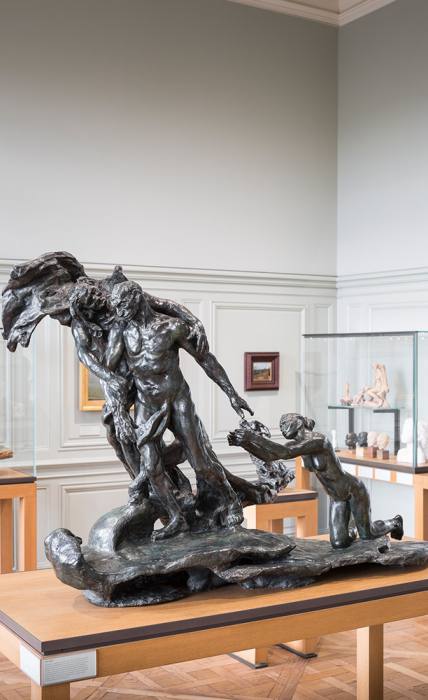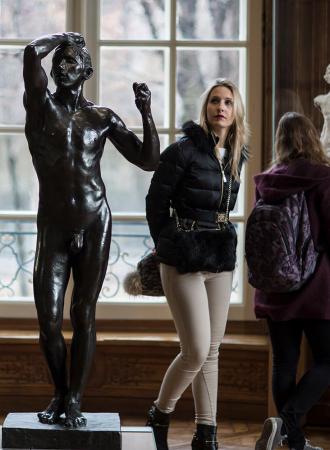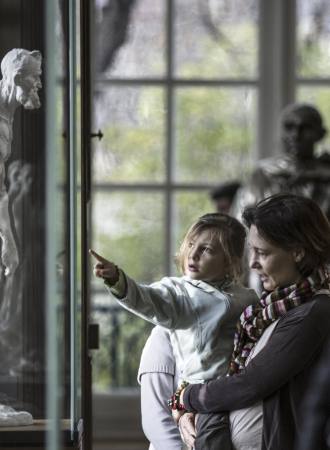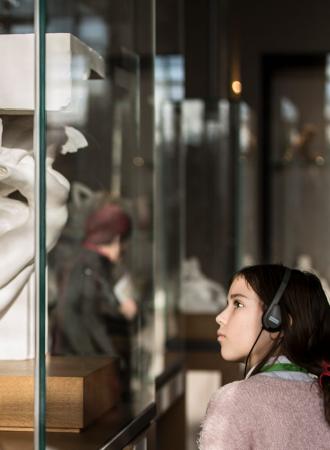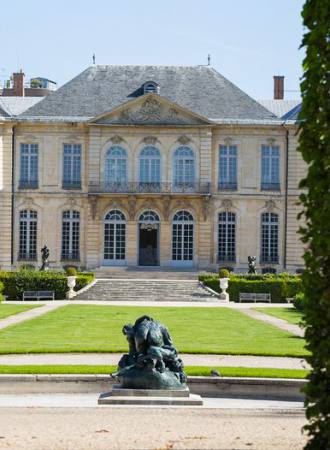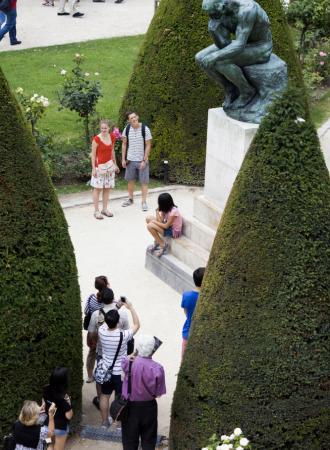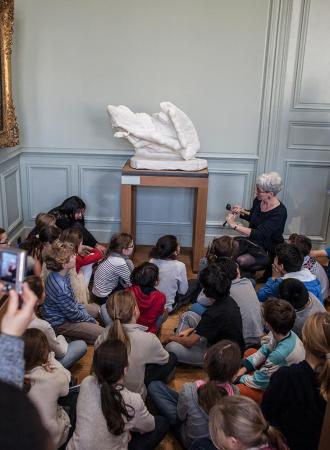Search the site
The depths of despair
Rodin was greatly concerned with the depiction of human emotion. He was influenced by Dante’s Divine Comedy trilogy, drawing greater inspiration from the first book, Inferno, with its horde of damned souls, than from Paradise or Purgatory. Despite his depictions of desperate faces and suffering bodies, Rodin saw courage and nobility in these characters who never surrender completely, even in the depths of despair.
Despair incarnate
Rodin excelled at têtes d’expression, or expressive heads―an exercise used by student artists to learn to depict emotions. In The Cry, an almost anatomical study, the whole face expresses despair, the wide-open mouth emitting a silent scream. With their twisted mouths and half-closed eyes, the faces of the Mourners created for The Gates of Hell are incarnations of pain and grief.
Rodin believed that the beauty of art lay in going beyond external appearances to capture the truth of a subject. This principle guided his depiction of the female figure in She Who Was the Helmet-Maker’s Once Beautiful Wife, whose withered beauty recalls Destitution by Jules Desbois and Camille Claudel’s sculptures Clotho and The Age of Maturity.
“Abandon hope, all ye who enter here”
This was the inscription that greeted the damned souls in Dante’s Inferno―the prime source of inspiration for the despairing figures featured in Rodin’s Gates of Hell.
Among these is Ugolino, depicted on all fours in a bestial pose as he prepares to devour his children; meanwhile the female figure of the Danaid, condemned to spend eternity attempting to fill a leaking barrel with water, has collapsed to the ground in despair.
The survival of hope
Rodin also depicted the nobility of the six Burghers of Calais, who sacrificed themselves to save their fellow citizens. The dejected but undefeated figure of the Fallen Caryatid Carrying Her Stone bears her burden courageously, while the sculpture entitled Despair conveys a highly unconventional classical serenity.





